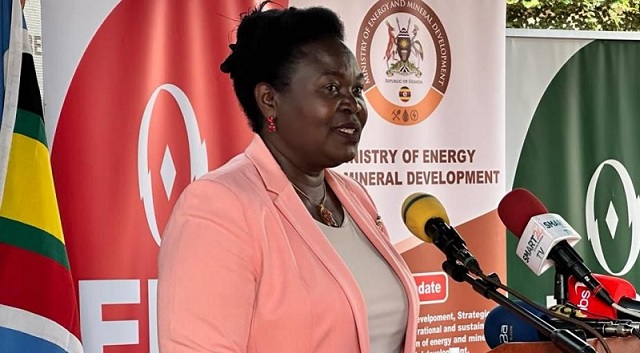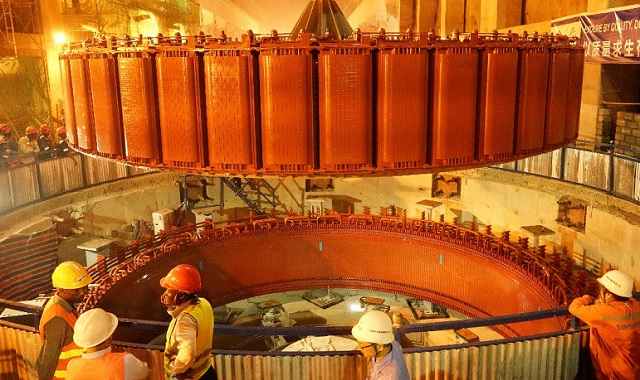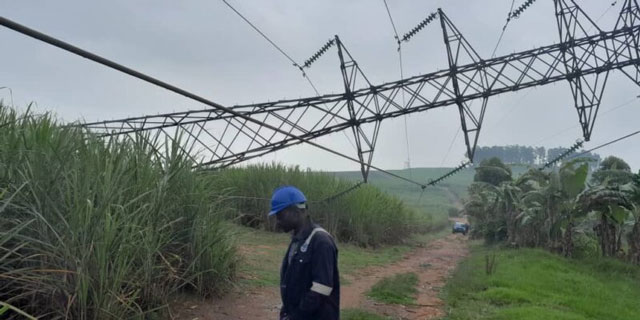
Kampala, Uganda | THE INDEPENDENT | The year 2022 has been that of ups and downs for Uganda’s electricity sector. From the flooding at Isimba leading to a national blackout to the return of load shedding and the enactment of the Electricity (Amendment) Act, of 2022.
The Electricity (Amendment) Act, 2022 is expected to be the major driver in regulating the electricity sector with changes like the exit of Eskom from the Nalubaale and Kiira dams when the current concession ends on March 31st, 2023.
January 2023 will come with reforms ending a single-buyer monopoly by UECTL in the purchase of all electricity generated in the country. The transmission sector is being opened up to more players.
Generally, 2023 is expected to usher in many changes in the electricity sector or what the sector players have described as a second electricity reform after the one that unbundled UEB in the late nineties following the enactment of the 1999 electricity Act.
One of the issues that come into play will be whether the country will have more power generated and consumed. 2022 did not see the commissioning of a new large-scale Karuma hydropower dam while the breakdown of the 184MW dam at Isimba was of concern as the country went into darkness.
As the year ends, the installed capacity remained at 1365 MW from all the power dams. The 600 MW Karuma dam was expected to come on board this year but its commissioning was delayed to the end of the first quarter of 2023.
Energy Minister, Ruth Nankabirwa was in an upbeat mood as the year ends promising to deliver Karuma after several extensions of the date of commissioning. “The addition of Karuma will not only enhance the Country’s power generation capacity but will also strengthen and improve the stability of the power supply grid,” said Nankabirwa
@NankabirwaRS: Commissioning of Karuma Hydropower Plant – Uganda expects to add 600 MW to its Installed Generation Capacity with the commissioning of the Nwoya-based Karuma Hydropower Plant. pic.twitter.com/z9z6DG5HId
— Uganda Media Centre (@UgandaMediaCent) December 30, 2022
Sources indicate that test running of Karuma dam has been ongoing ahead of commissioning. Karuma should have been fully operational by end of 2020. While the commissioning of Karuma dam will increase the installed capacity to 1965 MW, there is concern that the electricity generated will not be fully utilized because of gaps in the transmission and distribution infrastructure.
The other concern is that Uganda’s energy generation is still more dependent on large-scale hydropower dams yet the Ministry of Energy has always emphasized an energy mix comprised of large hydro, mini hydros, and renewable options like solar.
Investments into Uganda’s renewable energy sector has been sluggish. The only major investment that may materialize in 2023 is from a project by TotalEnergies EP Uganda. The energy company plans to install 120 Megawatts of Solar Photovoltaic (PV) technology in selected parts of the country. This collaboration follows the creation of a framework agreement for the establishment of large-scale renewable energy projects in Uganda through an MoU signed on February 1, 2022. The Government identified and proposed six possible sites in Kapeeka (20MW), Iganga (20MW), Tororo (20MW), Kumi (20MW), Bukedea (20MW), and Paliisa (20MW) for development by TotalEnergies EP Uganda.
At the end of 2021, the Electricity Generation Authority (ERA) found that the largest percentage (91.2%) of transmission purchases were from Hydro and other energy sources constituting only 8.8%. For some experts, that is problematic given that solar constituted just 2% of the total electricity.
A recent household survey by the Uganda Bureau of Statistics indicates that the national electricity access rate has increased to 57%, comprising 19% and 38% on-grid and off-grid connections, respectively.
With such progress, experts like Dr. Frank Ssebowa have indicated that it is unlikely that Vision 2040’s target of 60 percent electricity grid-based access by 2027 (33 off-grid) and 80 percent electricity access will be met.
Bridging the Electricity Access Gap
Some of the barriers to electricity access connections include high tariffs and connection charges. Engineer Abadon Atwine, the Assistant Commissioner in Charge of Electricity supply at the Ministry of Energy argues that there was some progress towards bridging the access gaps through the expansion of the grid.

“Because to have people connected to power, you must have access to the grid. If you don’t have one, you must have an alternative. So if you look at 2005, the distribution network was 6496 kilometers. We tripled that and we are at 5938 kilometers,” revealed Atwine.
According to Atwine, that means that the grid has gone closer to the people and that they can be hooked onto the network. The National electrification strategy study by the Ministry of Energy this year found that 51% of the population live within 0-1.5 kilometers of the grid, 34% lives within below five kilometers from the grid, and 13% live between five to twenty kilometers away from the grid.
The question is whether universal access (10.4 million households) connected to electricity by 2030. A recent afro barometer survey found that the proportion of Ugandans who live in zones served by the national electric grid has doubled since 2005, from 24% to 49%.
It found that urban residents (90%) and citizens who live in the Central region (81%) are far more likely to be in zones served by the electric grid than their counterparts in rural areas (36%) and other regions (30%-46%).
Afro barometer found that one in four Ugandans (26%) live in households that are connected to the national power grid. Poor citizens and residents in rural areas and in the Northern region are least likely to be connected.
Changes in Electricity and what to Lookout For in 2023
The assumption has been that the millions not connected to the grid will have to wait for grid extension. But the Ministry’s Permanent Secretary, Engineer Irene Bateebe recently revealed that 2023 may see new technologies for “bottom-up” energy access to complement the traditional top-down planning of national grid extensions.
Some of these initiatives will come with the implementation of the newly amended electricity law. The new Electricity (Amendment) Act of 2022 ended the single-buyer mode, where our Uganda Electricity Transmission Company (UECTL) was the single buyer of electricity generated in the country.
According to Engineer Bateebe, 2023 will see the enforcement of the law with guidelines that will usher in new players to end UECTL and Umeme monopoly. “We are removing that monopoly based on the idea that, in order for us to have competitive tariffs, we need to open up the market to competition,” said Bateebe.
Private Investment in the Transmission Segment. Private Investment in the transmission of electricity will take effect from the beginning of January 2023. According to the minister of Energy, Ruth Nankabirwa the opening up of transmission offers the opportunity for whoever wishes to invest in transmission.
The Acting CEO of Uganda Electricity Transmission Limited, Michael Taremwa Kananura had earlier told URN that his team is prepared to work under the new competitive arrangement. “We are committed to working with the private players in this space. To make sure that we have a robust network. That is not to say we don’t have a robust network. We have a network but it does not mesh,” said Kananura.
According to Kananura, the network as it stands needs further strengthening. “In other words, if we lose one leg, then we may have to maneuver to have electricity supplied to other parts of the country. So we want a grid development plan that will mesh up the network,” explained Kananura.
The Ministry of Energy statistics indicates the electricity transmission network length increased by 1,804 km from 1,627 km in 2017 to 3,431 km in 2021. Like in 2021, the electricity transmission sector has suffered a number of setbacks due to vandals who have been stealing pylons, wires/conductors, and transmission infrastructure for scrap. Vandalism was mainly blamed for a number of power blackouts in 2022.
The ministry of energy 2021 said it lost 260 billion to vandalism. A number of towers collapsed in 2022 due to vandalism. The last incident was reported at the end of November. “Vandalism is costing us the stability of the electricity supply network; it is also costing us huge sums of money to replace the vandalized infrastructure. I warn all those involved in the vice that sooner or later, you will be apprehended,” warned Nankabirwa

The other development to look out for in the coming year is the introduction of the direct purchase of Electricity. According to Ruth Nankabirwa, with the amendment of the Electricity Act in 2022, manufacturers who qualify will be able to purchase electricity directly from the power generators.
Exit of Eskom from Kiira and Nalubale Dams
A number of challenges have been identified in the area of electricity distribution in 2022. Some of the cross-cutting issues include vandalism, power theft, affordability of power, and power losses. Questions about reducing the 17% distribution losses and managing the transition from Eskom linger on. Eskom has been running the two dams under a 20-year concession.
Uganda Electricity Distribution Company Limited’s Managing Director, Paul Mwesigwa explained some of the energy losses occur because the consumer has not consumed all the energy from the transmission side. He said the energy losses due to technical losses is one of the major challenges as Electricity Regulatory Authority asks UEDCL to reduce the losses to about 9% or less.
“The fact of the matter is that we have to invest on the side of technical losses. To have a state of art distribution network, we have to invest $150 million per year. For about seven years. The challenge is that what will be the impact of that investment on the end—user tariff?” asked Mwesigwa.
The government has been investing about US$70 million in distribution networks. Uganda Electricity Generation Company Limited (UEGCL) will be taking over the management the of Kiira and Nalubale dam complex from Eskom whose concession ends on 31st March 2023. Eskom is expected to be paid a buy-out amount for the cost of investments it has not recovered.
UEGCL Managing Director, Eng, George Tusungwire Mutwetwaka told URN that a road map based on concession and assignment agreement is in place to ensure the transfer of the Nalubaale and Kiira dams. “The key requirement is to see that the installed capacity plus the key attendant facilities and the investments made return safety to UEGCL,” said Mutwetwaka.
Payment of Royalties
Renewable Energy generators will begin paying royalties to Local Governments in their respective areas of operation as per section 75 (7a) of the Electricity Act.
*****
URN
 The Independent Uganda: You get the Truth we Pay the Price
The Independent Uganda: You get the Truth we Pay the Price



